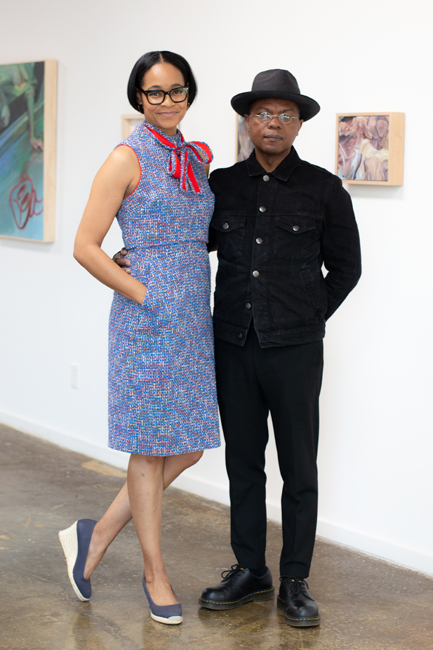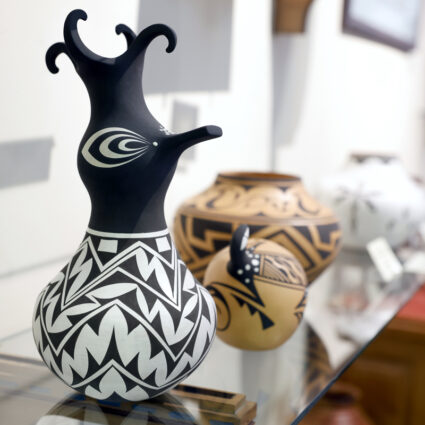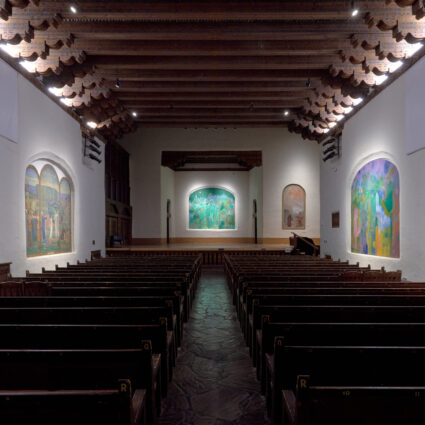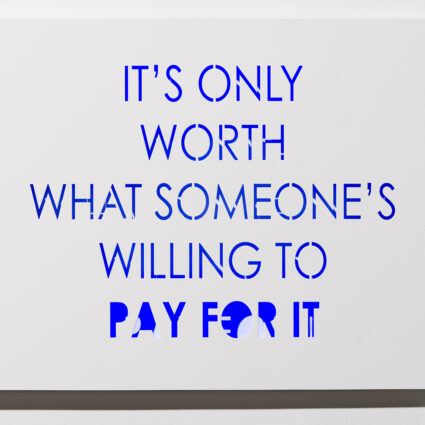Pencil on Paper Gallery extends the line of Black-owned galleries that trace the foundational practices of accessibility, inclusivity, and representation among art spaces in the Dallas-Fort Worth area.
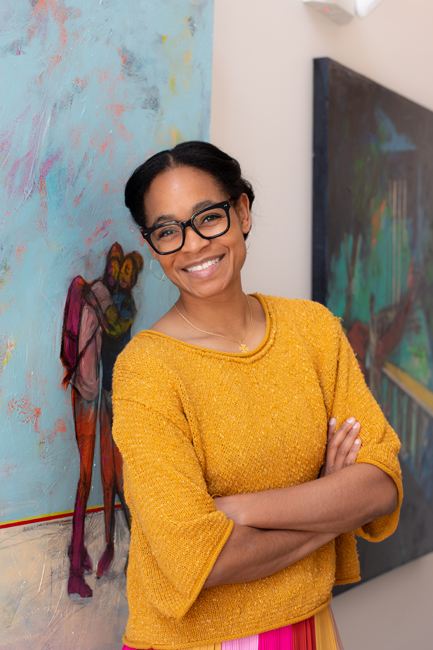
At the end of Algiers Street in Dallas’s Design District is an art gallery called Pencil on Paper.
The owner, Valerie Gillespie, who is also an artist, and her husband, the artist Emmanuel Gillespie, lift the room with their buoyant energy. The two-level gallery, which opened in 2019, invites viewers to invest in the stories of the art on display.
I had the opportunity to speak with Valerie, who shared the inspiration behind the gallery’s name, her curatorial practice, and her dreams for the Black-owned art space.

Laura Neal: Can you tell me about the name Pencil on Paper?
Valerie Gillespie: I chose the name Pencil on Paper Gallery because when we first begin to create and when we first think about drawing or having that creative mindset, it usually involves paper and a pencil.
My mom was a fashion designer. As a child, I watched her create sketches for my school clothes, and she always had a sheet of paper and a pencil. It would start there, and I would watch her create. That is where my artistry began, with pencil and paper.
LN: Something unique about Pencil on Paper is your position as an artist and educator. How do you develop your programming, and do you use the art education model to connect local artists as well?
VG: Working with artists and educators is something I’ve always done. I wanted a space where the community can come in, and emerging and established artists can come in and show their work, but I also didn’t want to lose that aspect of myself that’s an educator.
I thought about how I could merge all those things into one space. A space where we could show work, but also a space for workshops, gatherings, artist talks, and classes. A space for everybody—young, old, all races and nationalities. It needed to be the most inclusive space I could imagine.
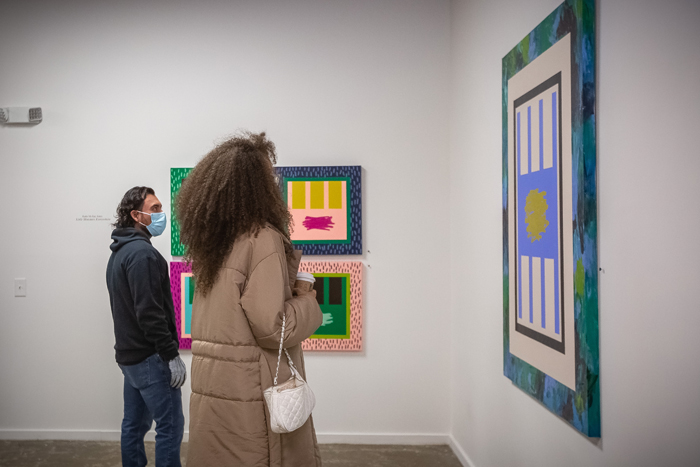
Growing up in Dallas in the ’80s and ’90s, I don’t remember many inclusive spaces. Some were so fancy that I didn’t want to go in. As a young artist, I remember feeling those spaces weren’t for me.
Later, I learned about the South Dallas Cultural Center’s Arthello Beck Gallery and the Pan-African Connection. These spaces inspired me. So really, I’m not inventing anything new, I’m just joining a group of people that have been doing this for a while and hopefully expanding and creating something else to keep it going.
LN: Could you share a list of Black-owned galleries in the Dallas area?
VG: There’s a ton! The Arthello Beck Gallery at the South Dallas Cultural Center is where I had my first solo show; Ma Fille Gallery whose structural model is jazz and art; Kinfolk House founded by Sedrick and Leticia Huckaby; and College Town Renaissance Center run by Sharon Henderson—she showed my work early on in my career and her gallery in Arlington was a safe space for artists.
There is also the Oak Cliff Cultural Center and Pan-African Connection, where the focus is on Black health, Black art, and Black literature. Black-owned galleries are out there, we just don’t always get much press.
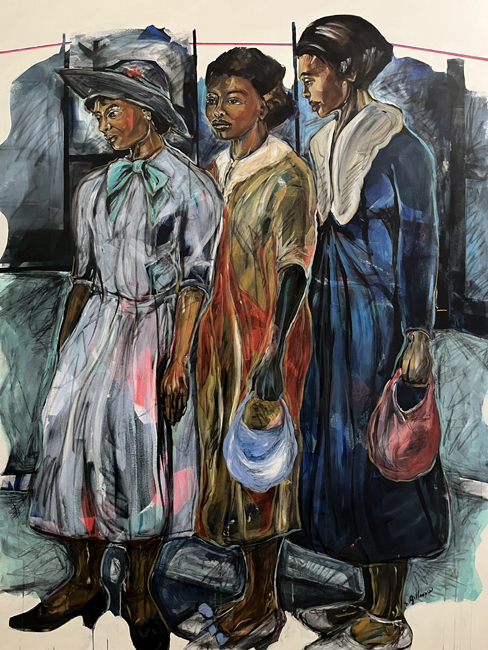
LN: Thank you for sharing this list. You are also a curator. Can you speak about your curatorial approach? What is your methodology and how do you find artists?
VG: When I curate in the gallery, it feels so much easier than when I curate in outside spaces; maybe because I have more control. I try to show a range of work that anyone might appreciate and enjoy.
Generally, my pedagogy and methodology when it comes to curating is the connection between myself, the artist, the vision of the work, and the greater community. It’s about people who create art that speaks, tells a story, and has something to give everybody.
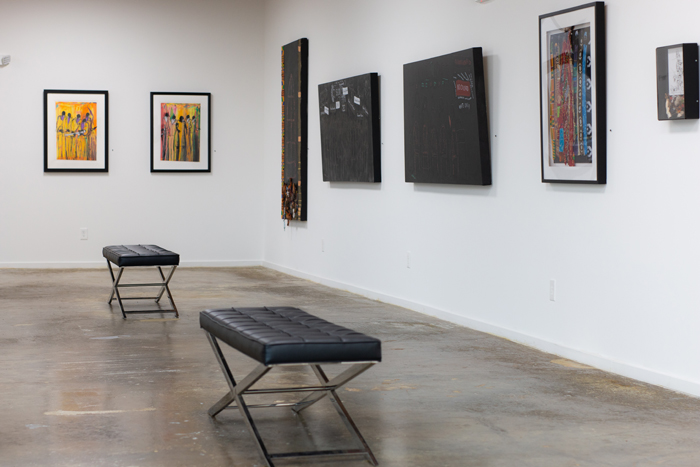
LN: I’d like to speak about origins. You’ve spent time in other cities, and you are well-traveled. What is it about Dallas that grounded you here?
VG: I was born here, so I’m a native of Dallas. I look at other galleries and artists and see that they’ve migrated here. Dallas is a new home for them, but for me, it has always been home. I have roots here and I value the community here, my daughter is here, my family is here, and my husband’s family is here, so there’s an investment that we have here that is natural and organic.
I want the best for Dallas, and I want my daughter to have what I didn’t have growing up here. I want her to have something because I didn’t always have something.

LN: Do you have a dream project for Pencil on Paper?
VG: I do! My dream project is to offer artist residencies here. I’d block off the top gallery for artists to live and create. I would offer a stipend and the artist would exhibit here.
So, a couple of month-long residencies where artists are helping me run the space, but they’re also creating and having an exhibition.
Part of the reason I built the gallery this way was with that framework in mind of having artists above and the gallery below. That’s my dream.
